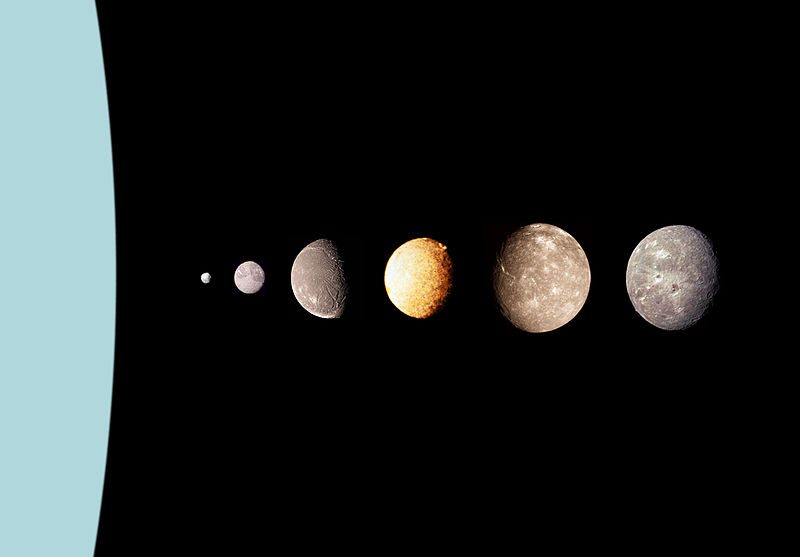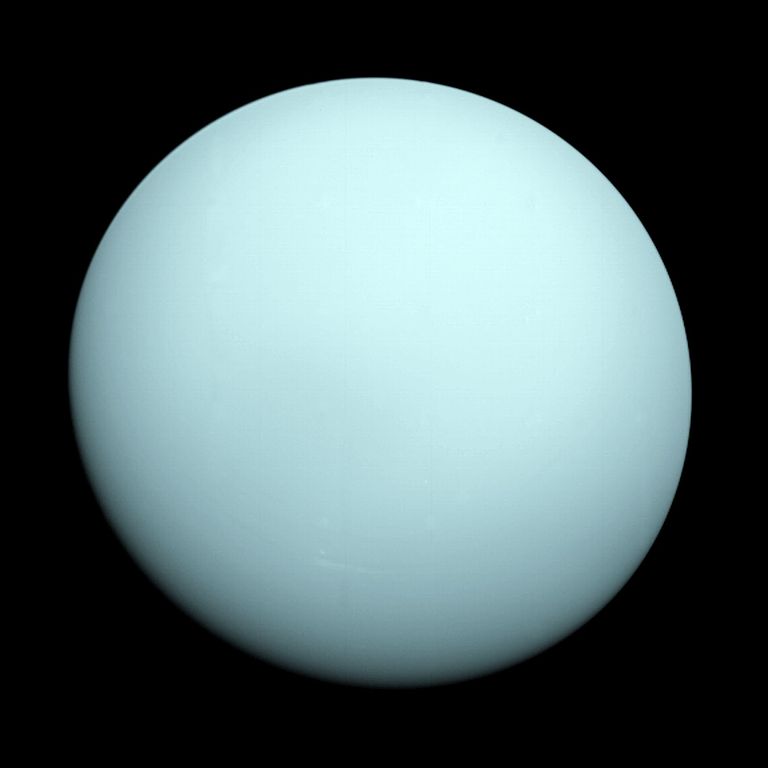Uranus
Episode #7 of the course Introduction to the Solar System
With a particularly problematic name, Uranus (pronounced “YOOR a nus”) is sometimes regarded as a bit boring. On the surface, it’s a pale blue sphere without many interesting features, but dig a little deeper and this planet (named after the ancient Greek god of the heavens) has quite a lot to offer.
Uranus is the seventh planet from the Sun (located at 1.8 billion miles or 2.9 billion km) and is the third largest planet in diameter (31,763 miles or 51,118 km). Given Uranus’s considerable distance from the Sun, it has an incredibly long orbital path to transverse – a journey that takes it 84 years in Earth time. That boils down to approximately 21 years between each seasonal change on the surface of the planet. However long its solar orbit may be, it rotates at a remarkably fast speed, and a day is just 17 hours and 14 minutes — one of the shortest day lengths of all the planets.

Size comparison of Uranus and Earth
One of the things that makes Uranus exceptional is that it is the only giant planet whose equator is nearly at a right angle to its orbit. Earth’s axis tilts at approximately 23.4 degrees, allowing us to have four evenly spaced seasons. In contrast, Uranus’s axis is tilted at 98 degrees, which means the planet rotates on its side, and for a half of a Uranian year, one of the poles is stuck in complete darkness.
The fact that Uranus holds 27 named moons in its orbit is also somewhat remarkable. As of 2003, Uranus ranks third in the number of moons in our solar system (after both Jupiter and Saturn). The two largest moons are Titania and Oberon, followed by Ariel and Umbriel. Each of the moons is named after a character in Shakespeare’s A Midsummer Night’s Dream or Alexander Pope’s The Rape of the Lock
. Titania, the largest moon, is the eighth largest satellite in the solar system and has a diameter of 981 miles (1,579 km). It is approximately ⅓ the size of Earth’s moon and is made of almost equal parts ice and rock.

Uranus and its six largest moons compared at their proper relative sizes and relative positions. From left to right- Puck, Miranda, Ariel, Umbriel, Titania, and Oberon

Diagram of the interior of Uranus
In addition to moons, Uranus also exhibits rings around its equator, though not nearly as stunning as those that wrap around Saturn. Dark and faint as they are, scientists have observed 13 rings in all. It is thought that the rings may be the result of a collision of moons that once orbited the planet.

Uranus in 2005. Rings, southern collar and a bright cloud in the northern hemisphere are visible (HST ACS image)
Given that the planet is far too dim to be seen by the naked eye, scientists agree that early civilizations would not have been aware of Uranus, as they lacked the assistance of more advanced tools. As a result, it is considered to be the first planet discovered in the more modern age — a discovery that took place on March 13, 1781 by English astronomer and composer William Herschel.
Recommended book
“Mining the Sky: Untold Riches From The Asteroids, Comets, And Planets” by John S. Lewis
Share with friends

